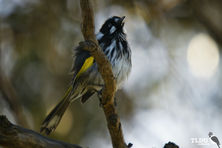
Shoppers Feedback:
Jan 17, 2017
Hello Ros,
I have now paid the invoice, but I would like to write to you just to say a big THANK YOU for getting me the Penguin!
The ChatterMate Penguin became a nice memory for me when I was in New Zealand, and I am so greatful to you for arranging so that I could have it! :-)
Thank you so much!!!!!!!!!!!
Regards,
Malin
Hi Ros,
Many thanks for your very kind email. I really appreciate your prompt reply!
I appreciate your advice regarding the decorations and customs. These are a gift for my daughter’s exchange student family so when she returns home on the weekend I will show her and see if she loves them as much as I do!
Thanks so very much again - I am truly grateful for your kind assistance.
Kind Regards
Bernadette
Ros,
Thanks again for the great customer service. It's a refreshing change!
Best regards,
Trevor
Hey Roz,
Thank you for your emails. Just loved my first order. The cute little Aussie bush critters are going to be used for an office Christmas decoration. My colleagues also liked them and talked about making an order to your site. I'll send you a photo when completed.
I'll be ordering more to send to my daughter's host family in America.
Fabulous service from you.
Kind regards,
Michelle
Thankyou. Order arrived today. One very happy grandson with his new beastly binoculars.
Regards,
Irene
- Home
- Wild Wonders
- Shop
- Aromas of Australia
- Australian Made
- Books
- Book Marks
- Christmas Decoration Sale
- Christmas Decorations
- Clocks
- Drink Holders
- Garden & Outdoor
- Gift Wrapping & Cards
- Home & Giftware
- Jewellery
- Keyrings
- New Products
- Pencils & Pen Holders
- Photo Frames
- Plush Toys
- Plush with Sound
- Sheepskin Rugs
- Stationery
- Stone Carvings
- Toys & Games
- Travel Goods
- Wedding
- Wild Figurines
- Wildlife Safety Products
- Wind Chimes
- Wine Charms
- View All Products
- Wildlife
- Australiana
- Explore
- Contact Us

Quick Facts
| Length: | 18 cm |
| Height: | - |
| Weight: | 20 grams |
| Colour: | - |
| Habitat: | Heath, forests, woodland and gardens, mainly where grevilleas and banksias are found |
| Food: | Mostly nectar from feeders but will also eat insects, spiders and fruit |
| Predators: | - |
| Status: | Secure in all states and territories in Australia |
The New Holland Honeyeater is mostly black and white, with a large yellow wing patch and yellow sides on the tail. It has a small white ear patch, a thin white whisker at the base of the bill and a white eye. This honeyeater is an active bird, and rarely sits still long enough to give an extended view. Sexes are similar in looks, but females are slightly smaller in size. Young birds are browner and have a grey eye.
One very similar species is the White-cheeked Honeyeater. This species has a single large white cheek patch and a dark eye. The two species frequently occur together.
The New Holland Honeyeater's range extends throughout southern Australia, from about Brisbane, Queensland, to just north of Perth, Western Australia.
The New Holland Honeyeater is common in heath, forests, woodland and gardens, mainly where grevilleas and banksias are found. It is inquisitive and approaches humans. It also mixes with other types of honeyeaters.
New Holland Honeyeaters are active feeders. They mostly eat the nectar of flowers, and busily dart from flower to flower in search of this high-energy food. Other food items include fruit, insects and spiders. Birds may feed alone, but normally gather in quite large groups. Most feeding takes place in lower areas of bushes and thickets.
The New Holland Honeyeater's cup-shaped nest is made of bark and grasses, bound together with spider web. It is lined with soft material and is placed in a bush or tree, anywhere from ground level up to 6 m. Both sexes feed the chicks. A pair of adults may raise two or three broods in a year.
Last Updated: Thursday 9th January, 2014
BirdLife Australia - www.birdlife.org.au
BUSH e-TELEGRAPH
Signup for our monthly newsletter the "e-Telegraph"
Quick Links
Home | The Beginning | About The Land Down Under | Wild Wonders | Advertise on Wild Wonders | Christmas Decoration Sale | Christmas Tree Decorations | Drink Holders | Plush with Sound | Stone Carvings | Wildlife Wine Charms | Freebies | Australian Wildlife | Help Our Wildlife | Australiana | Photo of the Month | Explore The Land Down Under | Contact Us | Legal Notices

